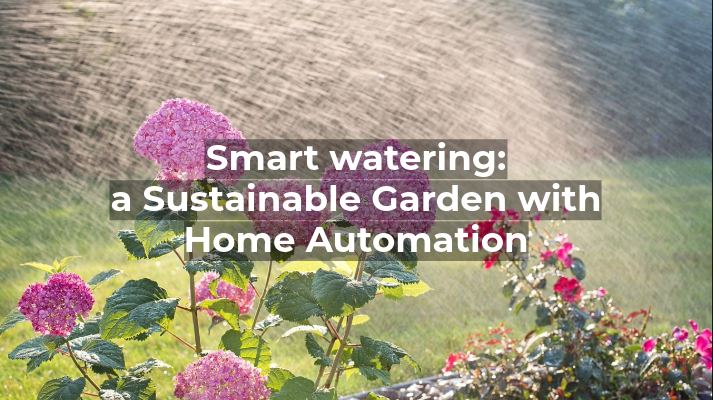In recent years, the concept of home automation has gained popularity, transforming our homes and buildings into smart, interconnected environments. At the heart of this technological revolution is an emerging new standard: the Matter protocol. But what exactly is it, and what are its advantages? Will it be widely adopted, or will it remain just another among the many home automation protocols on the market?
What is the Matter Protocol?
The Matter protocol is an initiative by the Connectivity Standards Alliance, supported by some of the biggest names in technology, such as Apple, Google, Amazon, and Comcast. The goal of Matter is to create a common language for home automation devices, allowing them to communicate and work together seamlessly, regardless of the manufacturer or brand.

Home Automation and Interoperability
One of the main obstacles to the development of home automation is the lack of interoperability between different brands. Each manufacturer uses different standard or proprietary protocols, making it difficult for consumers to integrate products from various brands into a single system. Matter is an open protocol aiming to become the reference point for all global manufacturers. This means that if a Smart Home’s devices are compatible 🤝 with the Matter protocol, they can all be managed by a single app, without brand or protocol constraints.
Application of the Matter Protocol in Smart Homes 🏘️🧠
In Smart Homes, Matter significantly simplifies the installation and use of smart devices. We can install a new thermostat, a smart lock, or solar panels, knowing that the new Matter-compatible devices will work with the existing ecosystem, regardless of their brand. This obviously improves the user experience.
Benefits for Smart Buildings 🏢
Smart Buildings, such as residential buildings, hotels, hospitals, or commercial buildings, can greatly benefit from adopting a universal protocol. The integrated management of systems such as lighting, security, heating, and ventilation is essential for optimizing energy efficiency and occupant comfort. Matter facilitates this integration, allowing all devices to communicate in a consistent and coordinated manner. This can translate into significant savings on operational costs and an improvement in the building’s overall performance.
Energy Savings with the Matter Protocol
One of the most promising aspects of home automation concerns energy savings. Thanks to its ability to efficiently communicate between smart devices, Matter can help optimize energy efficiency in a Smart Home or Smart Building. For example, Matter-compatible smart thermostats can collaborate with presence sensors and motorized blinds to automatically regulate the temperature based on room occupancy and external weather conditions. This helps reduce energy expenses by avoiding heating or cooling unoccupied spaces. Additionally, smart lighting systems can adjust light intensity based on available natural light, thus reducing electricity consumption.
Is Matter really that Revolutionary according to Dovit?
While not denying the advantages a universal protocol like Matter can offer, it is important to consider the limitations and challenges associated with the idea that a single technology can manage a diversity of systems and applications. Each home automation application domain has specific requirements, making it difficult to adopt a single standard for all uses.
Different application domains have different needs
For example, a lighting control system must be inexpensive and does not require high data transmission speeds. This type of system prioritizes simplicity and energy efficiency, ensuring that lights turn on and off based on actual needs without unnecessarily consuming energy.
On the other hand, multimedia control technology requires maximum transmission speed and quality to ensure an optimal user experience. High-definition videos, online gaming, and high-quality audio systems demand significant bandwidth and minimal latency. In this context, the cost of technology becomes secondary to performance and transmission reliability.
Alarm and security systems, meanwhile, typically use proprietary protocols to ensure maximum security in data exchange and access control. These systems must be intrusion-proof and hack-resistant, making them less compatible with open and widely used protocols. Additionally, many functions of these systems are not connected to generalist or third-party cloud services to avoid vulnerabilities and leaks of sensitive data.
Energy management systems require certified technologies for data storage, even in the absence of connectivity or power. They must quickly interact with other energy systems through local logical systems to respond effectively, for example, in the event of an overload on a local network. This ensures proactive and intelligent management of energy consumption and production, thus optimizing overall energy efficiency.
Furthermore, it is crucial to consider the hundreds of millions of existing smart installations that have used well-established protocols for decades. Many of these technologies have been on the market for over 50 years and have proven their reliability and effectiveness. Transitioning to a new universal standard like Matter would require considerable effort in terms of upgrading and compatibility, which could represent a significant obstacle to its widespread adoption.
Thus, while the Matter protocol represents a significant step toward interoperability, it is essential to recognize that each home automation application has specific requirements that can make standardization to a single protocol challenging. The most realistic solution is to promote interoperability between different technologies through integration hubs and translation gateways, allowing the use of the best technologies suited to each domain while ensuring harmonious communication between different systems.

It is difficult to envision a “single standard for home automation.” However, interoperability between different technologies will become increasingly common through translation gateways or true multiprotocol integration hubs.
At Dovit, with our research and development team DO.Lab, we have focused from the start on integration and flexibility, offering our clients the freedom to use the best technology for each application domain. For 20 years, Dovit has been designing and producing intelligent integration servers capable of combining various protocols and technologies. Our products cover professional technologies (such as Modbus, KNX, Bacnet, M-bus, DMX, Dali, etc.) as well as DIY solutions for small installations, often based on wireless technologies such as Zigbee, Google Home, Alexa, and soon, Matter. Our primary goal is to optimize the energy efficiency of every Smart Home and Smart Building.










